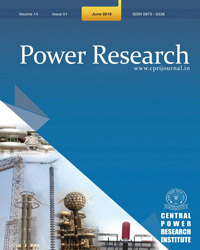Improvement of Energy Efficiency of Boiler Feed Pumps in Thermal Power Plants through Intelligent Prediction and Operational Optimization
Subscribe/Renew Journal
This paper describes the various methods for enhancing the energy efficiency of Boiler Feed Pumps (BFP) in thermal power plants. The specific auxiliary power used by BFPs vary between 2.2 to 3.6 % of the total gross energy generation for units ranging from 30 MW to 800 MW units. The average specific power used by BFPs for 210 MW plants is 2.4 to 3.2 % of gross energy generation. The energy efficiency improvement of BFPs by reducing the re-circulation flow, pressure drop across feed water circuit elements, enhancing overall efficiency of BFPs, etc., are discussed with case studies. The implementation of energy conservation measures reduce the average auxiliary power used by BFPs for 210 MW plant from average value of 3.6 to 2.3 % of gross energy generation and release an additional power of about 10.9 MU/year for one 210 MW unit.
Keywords
Energy Efficiency, Boiler Feed Pumps, Auxiliary Power, Pump Efficiency, Sec, Energy Conservation
User
Subscription
Login to verify subscription
Font Size
Information

Abstract Views: 293

PDF Views: 0



